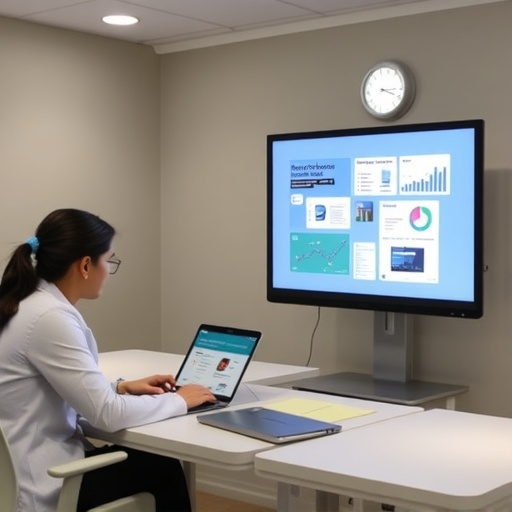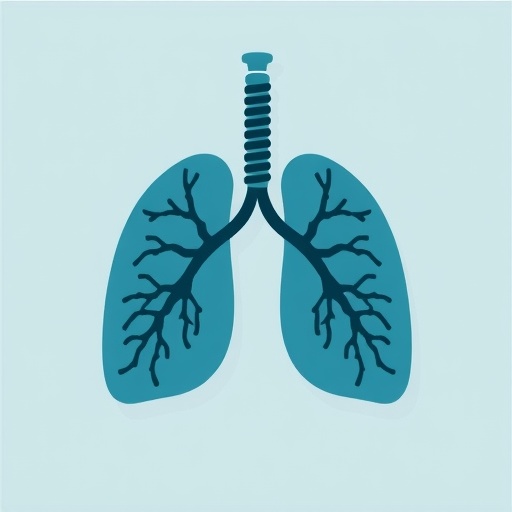By the time you reach the end of this sentence, RNA folding will have taken place in your body more than 10 quadrillion times. The folding of RNA is essential to life, yet because it happens so rapidly, researchers have difficulty studying the process.
"RNA folding during transcription is one of the biggest, most essential pieces of biology that we know comparatively nothing about," said Northwestern University's Julius B. Lucks. "It's an extremely ancient process, and it happens every single time a gene is expressed in a cell. But we have never been able to shine sufficient light on this process at all."
Lucks's group may finally be able to put the mystery to rest. Many years of research in Lucks's laboratory has culminated in a technology platform that provides a super high-resolution representation of RNA folding right as it is being synthesized. Allowing researchers to view this crucial biological process could potentially lead to future discoveries in basic biology, gene expression, RNA viruses, and disease.
Lucks, who is an associate professor of chemical and biological engineering at Northwestern's McCormick School of Engineering, and his team have already used to technology to view the folding of a riboswitch, a segment of RNA that acts as a genetic "light switch" to turn protein expression on or off in response to a molecular signal, in this case fluoride.
Supported by the National Institutes of Health, the research was published online on October 31 in Nature Structural and Molecular Biology. Postdoctoral scholar Eric J. Strobel and graduate student Kyle E. Watters, both in Lucks's group, were co-first authors of the paper. Strobel received the "best talk award" for this research at the 2016 Rust Belt RNA Conference.
Made up of long chains of nucleotides, RNA is responsible for many tasks in the cellular environment, including making proteins, transporting amino acids, gene expression, and carrying messages between DNA and ribosomes. In order to perform these different functions, RNA must fold into complex structures. Although researchers know quite a bit about the final structures that RNA molecules fold into, they know very little about how those molecules fold while they are synthesized by the cell. Technologies to image RNA folding do exist, but they are very low resolution and cannot image RNA's individual components rapidly enough to capture these processes.
"Our technology can capture a nucleotide-resolution picture of these RNAs as they are made," Strobel said. "We can see how every individual building block of RNA is changing as it folds during synthesis. This has never been done before."
Lucks's technology combines two existing components: a next-generation sequencing technique, which is typically used for sequencing human genomes, and a chemistry technique to turn RNA structure measurements into big data. "Instead of treating it like a genome sequencer, we're treating it like a molecular microscope to get a massive snapshot," Lucks said.
The technique captures the RNA folding pathway in a massive dataset. Lucks's group uses computational tools to mine and organize the data, which reveals points where the RNA folds and what happens after it folds. From the structural information that they gather, they can reconstruct a movie of the RNA folding process. The team plans to make the data-analysis component open source, so researchers anywhere can download and run the program.
The technology can be applied to all questions pertaining to RNA, such as how it plays a role in disease. Several notable human diseases, including Ebola, hepatitis C, and measles, are caused by RNA viruses, which are viruses that have RNA as their genetic material. And just as misfolded proteins can cause diseases, such as Alzheimer's and Parkinson's, RNA misfolding could also play a role in human illnesses.
"There could be RNA misfolding diseases," Lucks said. "But we don't know for certain because we haven't been able to look at them. But that's just the tip of the iceberg. I'm convinced that we're going to use this technology to make a major discovery — if not several."
###
Media Contact
Megan Fellman
[email protected]
847-491-3115
@northwesternu
http://www.northwestern.edu




